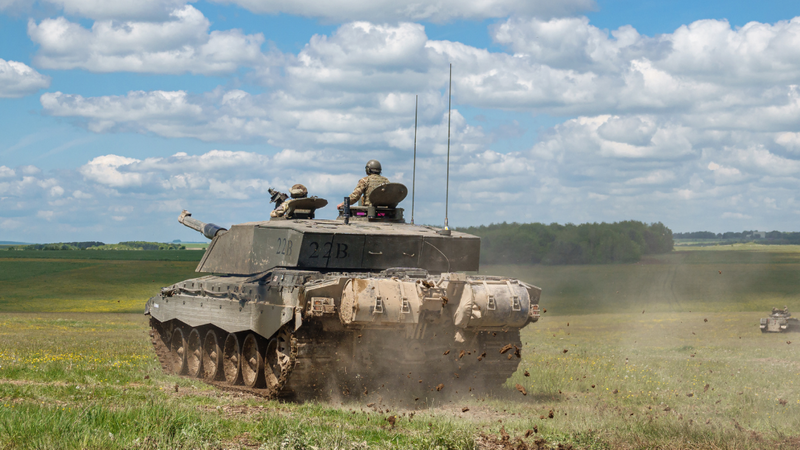How Are Electric Vehicles Used In Defence?
We’ve seen a huge increase in the market for electric vehicles (EVs) over the past decade as the public and businesses embrace the goal of zero emissions.
This article was first published on
www.rowse.co.ukNow, military and defence industry advisers are assessing the potential benefits of adopting EVs for their land-based fleets.
Benefits To Industry
Government agencies in many parts of the world are working closely with companies across the EV value chain. Military and defence organisations are investing in several relevant sectors, including battery technologies, manufacturing capabilities, energy infrastructure, platform design and logistical services. Companies involved in technological development, energy and automotive production are turning to the defence market as opportunities for expansion in these areas increase.
The UK’s Defence Support organisation has been running trials of hydrogen-based EVs at selected army, navy and air force locations. Defence Support wants to achieve zero emissions by the end of 2027 and is making the most of the opportunities offered by new technologies. They hope to power some of their land vehicles with hydrogen to leverage a wider spectrum of sustainable energy sources. As well as reducing emissions, hydrogen-based EVs will deliver significant operational advantages, especially in off-grid locations.
This follows a major shift in focus by the British Army, who in 2021 announced their planned electrification of battlefield vehicles at the Defence and Security Equipment International (DSEI) exhibition. Since 2022, the Army has been increasing its use of sustainable energy for its vehicle fleet, including hybrid electric drive technologies and battery-powered EVs.
Electric motors offer significant tactical advantages. They can instantly pick up a lot of speed, so it’s easier to accelerate up steep gradients or get away from pursuers. The Army sees electrification of the battlefield changing the operational methods of future land forces, not least in reducing thermal and sound signatures. This will open the way for significant progress in stealth mode capabilities.
Key Technological Trends
The impact on the industry is expected to follow several main trends, including additive manufacturing (3D printing), battery innovation, demand for more advanced materials and improved power/battery management systems (PMS/BMS).
3D PRINTING
Additive manufacturing, more commonly known as 3D printing, is becoming an important factor in industrial development. Its capabilities have expanded in the last few years and it’s now set to take on anything from small, in-house component replication to innovative, large-scale projects. The most important features for the development of EVs are probably the great improvements in accuracy and speed of production, as well as its capacity for hybridisation with other manufacturing techniques.
BATTERY INNOVATION
Trends in battery composition make them increasingly cheaper and more efficient. Changes in battery chemistry include the transition from toxic metal composition to less damaging and cheaper materials. Solid-state batteries are also being developed that use less lithium, charge much more quickly and can hold a charge for much longer.
ADVANCED MATERIALS
The construction of EVs currently depends on the supply of many rare and hard-to-source minerals – especially difficult when they are located in areas of geopolitical unrest. Research is concentrating on finding ways to replace those components or on alternative fuel supplies like the Defence Sector’s trial of hydrogen-based power. Product design employs lightweight materials such as aluminium, magnesium, high-strength steels and titanium metal alloys. When combined with 3D printing, more complex composite materials can be used.
How Does All This Affect Electric Vehicles Used In Defence?
The technological advances in the development of EVs contribute to some major macroeconomic trends. These include expanding defence budgets due to increased geopolitical competition and the industrial growth to meet that demand. While the military market is still at the developmental stage, the British Army started testing hybrid EVs about four years ago, backed by a £7 million investment from the Ministry of Defence. Trials of pre-production models are currently ongoing and their performance is being evaluated. This includes assessing how autonomous electric systems can be fully recharged in the field.
EVs form a key part of the battlefield electrification proposed by the Army in its “Future Soldier” project. Over the next 13 years or so, the Army will be incorporating new technologies like hybrid electric drives into its vehicle fleet. As battlefield electrification progresses with more advanced weapons and increased reliance on computer processing, power consumption will be at a premium. How these expanded capabilities perform will depend on how well they can be powered, recharged and sustained.
The plan is that one hybrid EV will be able to generate 500+ kilowatts of power, which is comparable to that produced by nine existing generators. The Army says that a field hospital could be powered by 2.5 of these vehicles – or enough emergency power to assist relief operations in a disaster zone. It’s also looking into modular batteries, and ways of installing them to save space and weight.
Pros And Cons Of Using EVs In Defence
The armed forces and industry suppliers for the defence sector will face some key challenges, including the sourcing of materials and consequent pressure on the supply chain. They must maintain sustainability and focus on renewable energy while at the same time reducing emissions and reliance on fossil fuels. Much of the old infrastructure will need replacement as new technologies are integrated.
On the upside, using electric vehicles in defence will offer considerable opportunities for institutional investors. The same applies to suppliers and armed forces around the world, throughout the military EV value chain. The scale of battlefield electrification envisaged by such projects as “Future Soldier” will give significant stimulus to military EV-related R&D programmes as well as the various industries involved.
